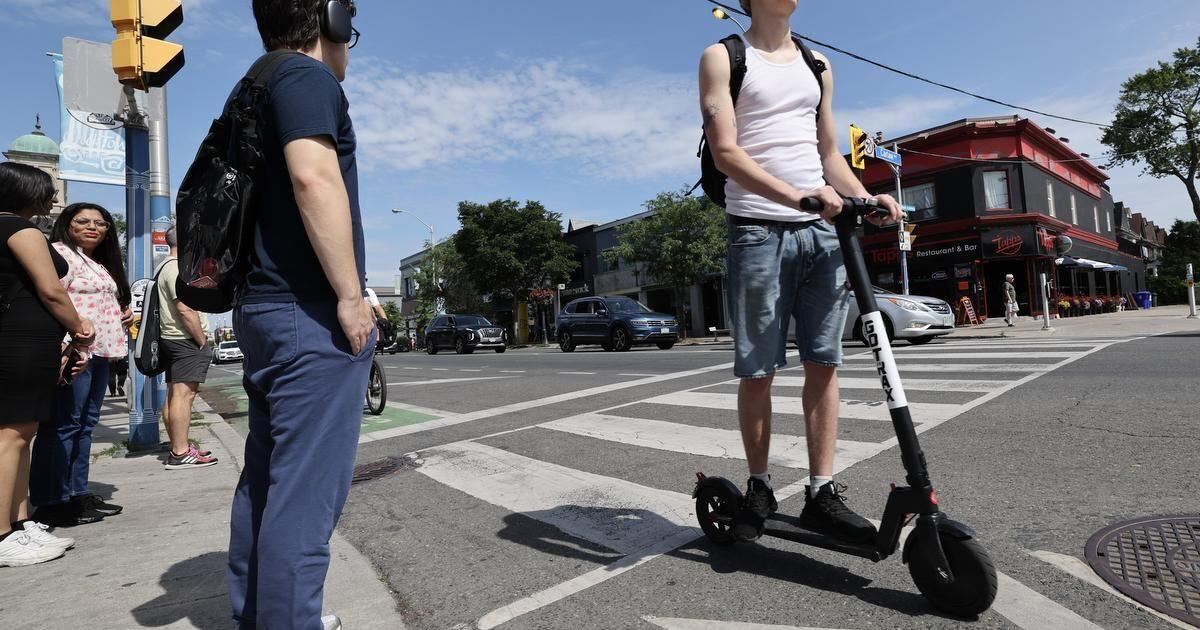Original title: “An explosion of electric vehicles are overtaking the bike lanes”
It’s a tangled issue and I admit I don’t know quite what should be done. I set out to write a rant against e-bikes and e-scooters and the whole pack of weird machines invading the bike lanes and (far too often) invading our already-crowded sidewalks.
But as soon as you start thinking through the problems it’s obvious that the solutions aren’t obvious at all. Which is why cities like Toronto keep kicking the issue down the road.
To start with, it would be a shame to crack down on those hard-working food couriers. All of a sudden, it seems, they’re everywhere, especially late in the day when people start ordering their burgers and such.
But as the Star’s Ben Mussett has reported, they’re just scraping by under very difficult conditions, working on the margins of the gig economy. Let’s not scapegoat these poor folks, of all people.
The bigger issue is so-called micromobility — offering people more eco-friendly ways of getting around, especially in the “last mile” between transit stations and home or office. An e-scooter may be a nuisance or even a threat to me, but it could be an ideal way for someone to get around the neighbourhood without resorting to a car.
I’ve been slightly jaded of late by news articles and columns fear-mongering about the dangers of ebikes, electric scooters, etc., so I went into this article expecting the worst. Instead, the author makes a salient point that people riding electric micromobility in bike lanes are simply trying to use the best transit option available to them that doesn’t involve using a car, and that’s why it’s especially important for city governments to start actually trying to figure out a fair way to regulate them, instead of kicking the can down the road and letting micromobility remain in a quasi-illegal limbo.
In my opinion, the ideal solution to the diversity of speeds in micromobility is simply to remove car lanes and parking to make for significantly wider bike paths. This would give more space for safe passing as well as reduce the presence of the most dangerous vehicle on the roads by far – cars. Plus, this would give more room for slightly bulkier options like bakfiets.
In addition, impose reasonable max speed regulations on micromobility manufacturers at the national level.
I’m probably over thinking it, but I feel like most people (especially in published word) don’t want to admit they don’t know all the answers. Then we get articles with hard takes that might not be fully thought out. I’ll always appreciate an article that expounds on an issue and admits they don’t have all the answers.
All to say, thanks for sharing the article! It was certainly a breath of fresh air.
impose reasonable max speed regulations
This would be key: getting everyone going about the same speed
Live in a dense city, and e-scooters did cause a lot of accidents. I still think they’re good though, but it does need the infrastructure in the form of bike lanes.
Imo the fix is even more micromobility. The general rule of thumb is 8 minutes. If you can’t get to your destination within 8 minutes of walking then most people won’t walk there. I (thankfully) live within that range of 2 bbq joints, 2 bars, 1 coffee shop, 1 drug store, and a grocery store. And just beyond that at about 10~12 minutes is a pet food store, another coffee shop, and 2 more food places. People don’t order food online if they walk past it on the way home
I don’t think the top speed of the device itself is really the issue, my scooter is limited to 22 mph and I have cyclists pass me all the time on our bike and mixed trails. Especially on hills where I get bogged down. People should be mindful of speed though. I yield the bike lane to slower vehicles if it’s crowded, and move into the street.



